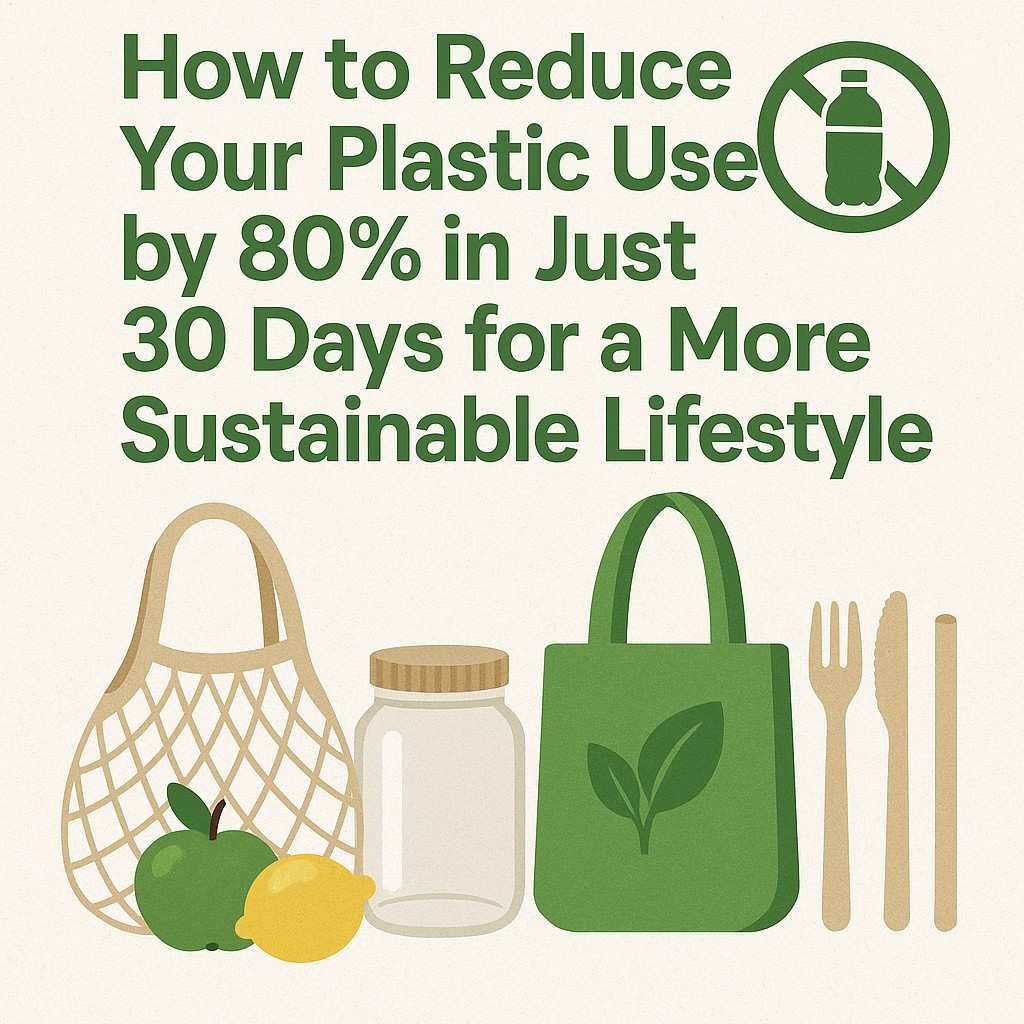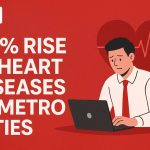How to Reduce Your Plastic Use by 80% in Just 30 Days for a More Sustainable Lifestyle.
Plastic pollution is one of the most pressing environmental challenges facing the United States today. With millions of tons of plastic waste ending up in landfills, oceans, and waterways every year, Americans are increasingly searching for effective ways to reduce plastic use. If you want to cut plastic use by 80% in just 30 days, this comprehensive guide will walk you through practical, actionable steps you can take immediately.

Why Reducing Plastic Use Matters in the USA?
Before diving into the “how” it’s important to understand why cutting down on plastic is critical. The U.S. alone generates over 35 million tons of plastic waste annually, with only about 9% recycled. The rest contributes to pollution, harming wildlife and contaminating natural resources.
Plastic waste harms marine ecosystems, affects human health through microplastics in food and water, and contributes to greenhouse gas emissions during production and disposal. As awareness grows, more Americans are committed to embracing sustainable living by reducing plastic consumption.
Step 1: Conduct a Plastic Audit at Home –To reduce plastic waste effectively, start by understanding how much plastic you currently use. Perform a quick audit of your home:
- Check your kitchen for single-use plastic items like plastic bags, wrap, bottles, and containers.
- Look at your bathroom and laundry area for plastic packaging.
- Note your grocery shopping habits and types of packaging you bring home.
This baseline will help you identify the biggest plastic offenders and prioritize areas for change.
Step 2: Switch to Reusable Alternatives – One of the fastest ways to cut plastic use by 80% is replacing disposable plastics with reusables:
- Reusable Shopping Bags: Say goodbye to single-use plastic bags. Invest in sturdy canvas or nylon bags for grocery shopping.
- Water Bottles: Use stainless steel or BPA-free reusable bottles instead of bottled water.
- Food Storage: Replace plastic wrap and single-use sandwich bags with beeswax wraps or silicone food storage bags.
- Coffee Cups:Bring your own reusable coffee cup or tumbler to cafes.
These simple swaps drastically reduce your plastic footprint and are widely recommended for sustainable living.
Step 3: Rethink Your Grocery Shopping – Food packaging is one of the biggest contributors to plastic waste. Here’s how to shop smart:
- Buy in Bulk: Opt for bulk bins where you can fill your own containers.
- Choose Plastic-Free Produce: Pick loose fruits and vegetables instead of pre-packaged ones.
- Bring Your Own Containers: Many stores now allow you to bring your own jars and containers for items like nuts, grains, and spices.
- Avoid Single-Use Plastics: Avoid individually wrapped snacks, plastic bottled sauces, and pre-packaged meals.
This strategy not only cuts plastic waste but can also save money in the long run.
Step 4: Adopt Zero-Waste Habits in the Kitchen – The kitchen is a hotspot for plastic use. Try these zero-waste habits:
- Compost Food Scraps: Reduce the need for plastic trash bags by composting organic waste.
- Use Bar Soap and Shampoo Bars:Switch from plastic bottles to solid bars.
- Shop from Zero Waste Stores:Many cities now have zero waste or package-free stores where you can buy household essentials without plastic packaging.
- DIY Cleaning Products: Make your own cleaning solutions with natural ingredients to avoid plastic spray bottles.
Step 5: Cut Down on Plastic in Personal Care – Plastic packaging dominates personal care products. Transition to eco-friendly options:
- Switch to Bamboo Toothbrushes: Plastic toothbrushes add to landfill waste.
- Use Refillable Containers: Look for refill stations or brands that offer refills.
- Choose Natural and Plastic-Free Makeup:Many brands now focus on sustainable packaging.
- Avoid Disposable Razors: Opt for safety razors with replaceable blades.
Step 6: Reduce Plastic Waste in the Office and Work Life – Plastic use isn’t just at home. You can minimize plastic in your workplace too:
- Bring Your Own Lunch: Use reusable containers and avoid plastic sandwich bags.
- Use Digital Notes: Cut down on plastic pens by using digital devices or refillable pens.
- Avoid Single-Use Coffee Pods: Brew coffee the traditional way with reusable filters.
Step 7: Educate Yourself and Advocate for Change– Knowledge is power. Follow environmental blogs, social media pages, and news outlets focusing on plastic pollution and sustainable living. Share your journey with friends and family to spread awareness.
Additionally, support policies aimed at reducing plastic waste, such as bans on single-use plastics and improved recycling infrastructure in the USA.
Step 8: Track Your Progress and Stay Motivated –Cutting plastic use by 80% in 30 days is ambitious but achievable. Track your progress weekly:
- Keep a journal or app to log plastic items avoided.
- Celebrate milestones like the first week without plastic bags or bottled water.
- Join online communities for motivation and ideas.
- Staying accountable will keep you focused and committed.
Common Challenges and How to Overcome Them
- Challenge 1: Convenience of Plastic –Plastic is convenient, but the impact is costly. Prepare ahead—carry reusable bags and bottles to avoid last-minute plastic purchases.
- Challenge 2: Lack of Alternatives– Sometimes plastic-free options aren’t readily available. Look for online retailers specializing in zero waste products or try DIY alternatives.
- Challenge 3: Cost Concerns– Many reusable products have upfront costs but save money over time. Think of it as an investment in your health and the planet.
Conclusion:
Reducing plastic use by 80% in 30 days is more than just a goal—it’s a commitment to a healthier environment and sustainable future. By conducting a plastic audit, switching to reusables, shopping smart, adopting zero-waste habits, and advocating for change, you can make a significant difference.
The movement to cut plastic waste is growing rapidly across the USA, with more communities embracing bans and initiatives. Your individual actions contribute to this collective effort.
Start today, stay consistent, and inspire others. Together, we can create a cleaner, greener America—plastic-free!






























